(A SHIP's CHRISTENING)
![]()
![]()
William H. Cummins of Peterborough, Ontario, a former sea cadet from RCSCC Haida Streetsville, Ontario was christened aboard Nootka in September 1955. As a result, he and anyone else who was christened aboard ship had their names inscribed on the ship's bell. Bill tracked down the bell, confirmed that his name was on it and obtained photos of it via the CO of 56 RCSCC Nootka, Jason Finkbeiner (2011).
 |
| Chaplain H. Ploughman proceeds with the christening. |
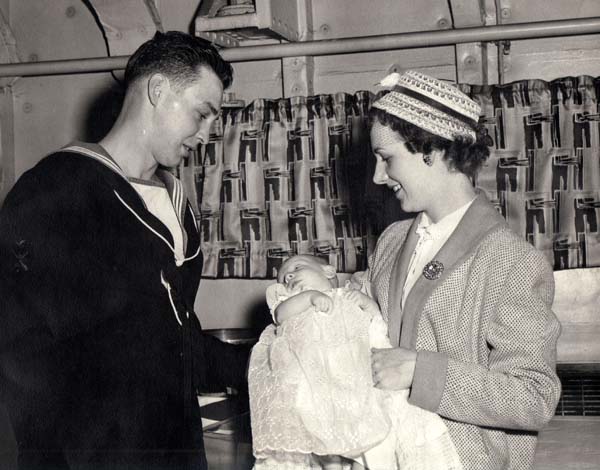 |
| Ldg. Seaman John “Jack” J. Cummins with son William and wife Shirley. John served aboard Nootka. |
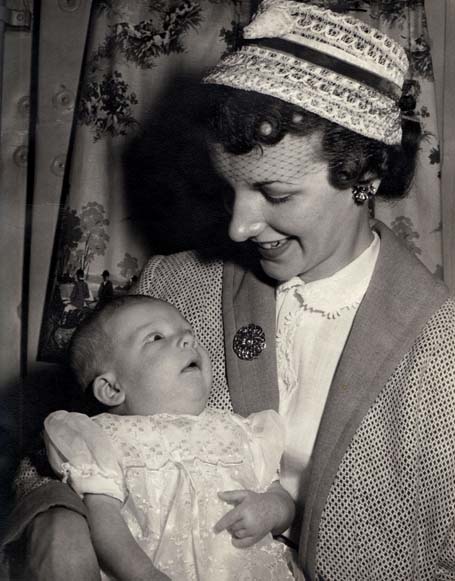 |
| William with mother Shirley H. Cummins (nee Dowling). |
| The photos in this table were taken in September 1955. The name of Nootka's photographer is not known at this time. |
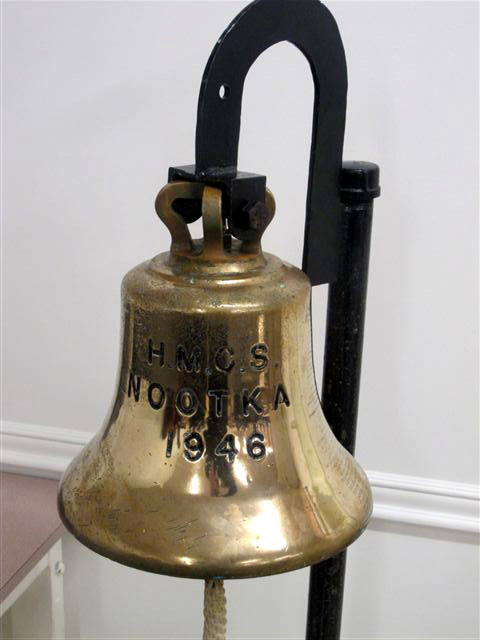 |
| Nootka's bell as seen at 56 RCSCC Nootka in Holden, Alberta (Photo by Jason Finkbeiner, CD Lt(N)) |
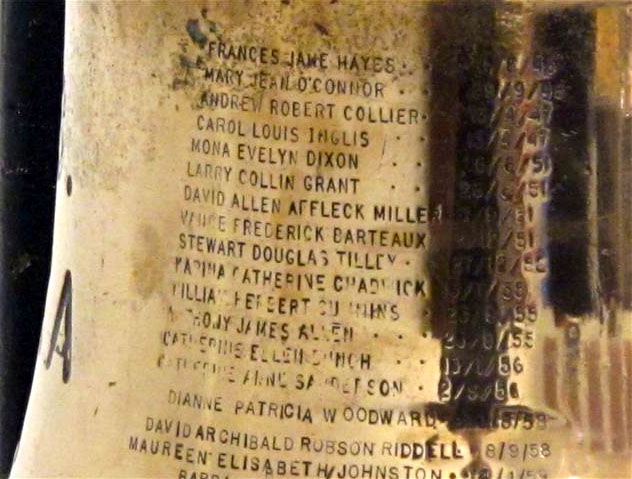 |
| William Herbert Cummins is the 11th name from the top. (Photo by Jason Finkbeiner, CD Lt(N)) |
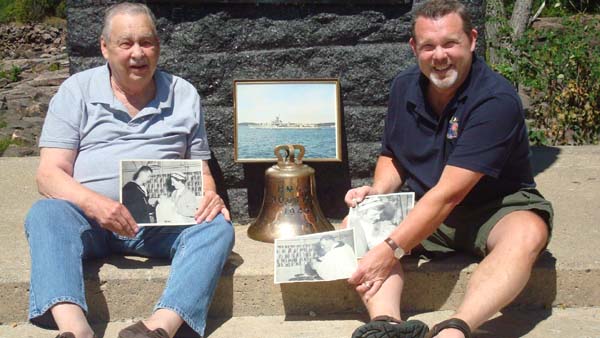 |
| Now....let's fast forward many years later. Jason Finkbeiner, CO of the cadet corps in Holden Alberta shipped Nootka's bell to the Royal Canadian Legion in Sturgeon Falls Ontario so John Cummins (L) could pose with the bell along with his son. Together, they are holding Bill's christening photos which are the same ones shown at the top of this document. While away from Holden, the bell was under the watchful eye of cadet volunteers who were vacationing in Sturgeon Falls. |
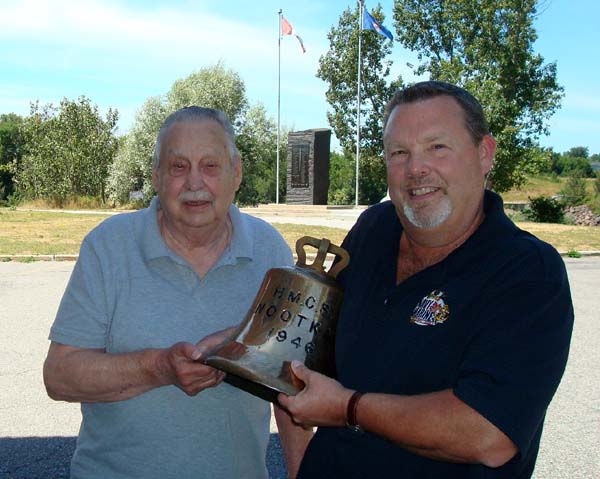 |
The Role of the Chaplain Aboard
Ship
by The Reverend Cannon William
Thomas SLt (N) Ret'd
Except for command ships or squadron leaders, ships of the RCN did not normally have a chaplain aboard. As such, the chaplain would move from ship to ship to conduct services by jackstay transfer, often carrying, in addition to a bible, prayer book and personal gear, a large sack containing mail, and reels of l6 mm films (chief form of entertainment before television and satellite connections) - a pretty heavy load.The chaplain would be quartered with the officers, usually sharing a cabin with a junior officer. While he would often take his meals in the Wardroom, he was also welcome to eat in any of the messes. Originally, chaplains held no rank at all. Chaplains were often addressed as 'Padre' (Spanish for "Father"), and, less respectfully, as a 'Sin Bos'n'.
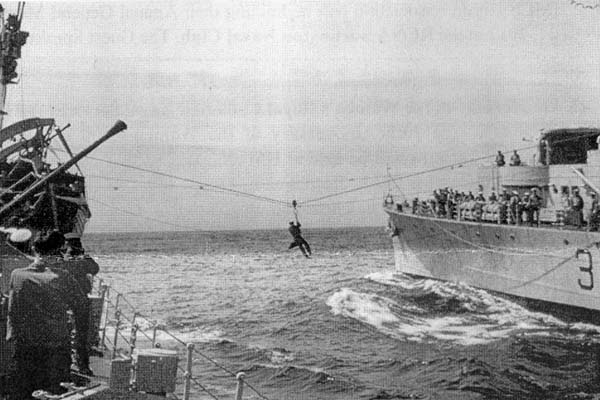 |
| The light jackstay is used for transferring personnel,
provisions, light stores and has a maximum transfer load of 250 kg. The
hauling end of the jackstay is manned by at least 25 men (28 in high sea
states) and the other end is secured by a grommet strop to a slip in the
receiving ship. The traveller block is hauled back and forth along
the jackstay by an outhaul in the receiving ship and by an inhaul in the
delivering ship, manned by 6 men in each ship. Working distance limits
of the rig are 24 to 61 metres with a normal working distance of 34 metres.
The standard transfer rate is 35 loads per hour in reasonable weather conditions,
and the fleet Standard Time for evolution (ie First Line Gun line to test
weight hooked on in the supplying ship). This is called the Setup and from
'Last Load unhooked' to 'All Clear' (The Disassemble) is around 10
minutes.
The above photo shows a midshipman being run between two Prestonian Class frigates, carrying a standard RAS bag, with lifejacket attached. His foot rests in the eye splice of a 2.5m rope secured to the travelling block, and he grips the upper portion of the line with both hands. It is considered very bad form, although it has been known to happen, to 'wet' the transferee by slacking off on the jackstay. (RCN photo) |
Credits and Contributors:1) Bill Cummins <mrbill1(at)cogeco.ca>
2) Jason Finkbeiner, CD Lt(N) - CO of 56 RCSCC Nootka (Apr 2011)
3) William Thomas <thomasbj3(at)sympatico.ca>
|
|
Sept 15/12